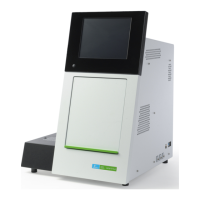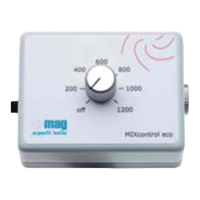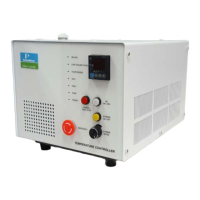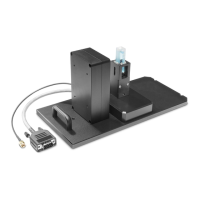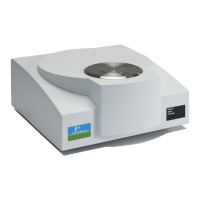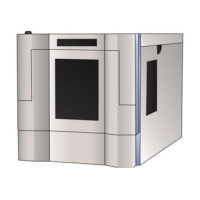Understanding Peak Finding 112
V4.2 LabChip GX User Manual PerkinElmer
Peak Splitting - Inflection Threshold
In situations where peaks overlap, the signal does not return to the
baseline and the slope may or may not change sign, depending on
the how close the peaks are to each other. Two peaks with a valley
in the middle is normally split into two peaks, but if a peak appears
as a shoulder on another peak, splitting does not normally occur. A
shoulder is recognized in the analysis as an inflection point. The
slope reverses direction but does not change sign. The slope trace
shows peaks and valleys - the valleys being the location of the
inflection points. The peak in Figure 50 is normally identified as a
single peak although the orange slope trace shows three distinct
inflection points.
Figure 50. Single Peak
Setting the inflection threshold above the value of the valleys in the
slope splits the peak shoulders into separate peaks. The higher the
inflection threshold, the more peak splitting occurs. In this example,
a value of 150/sec splits off both shoulders. A value of 110/sec only
splits off the left shoulder. (See Figure 51 on page 113.)
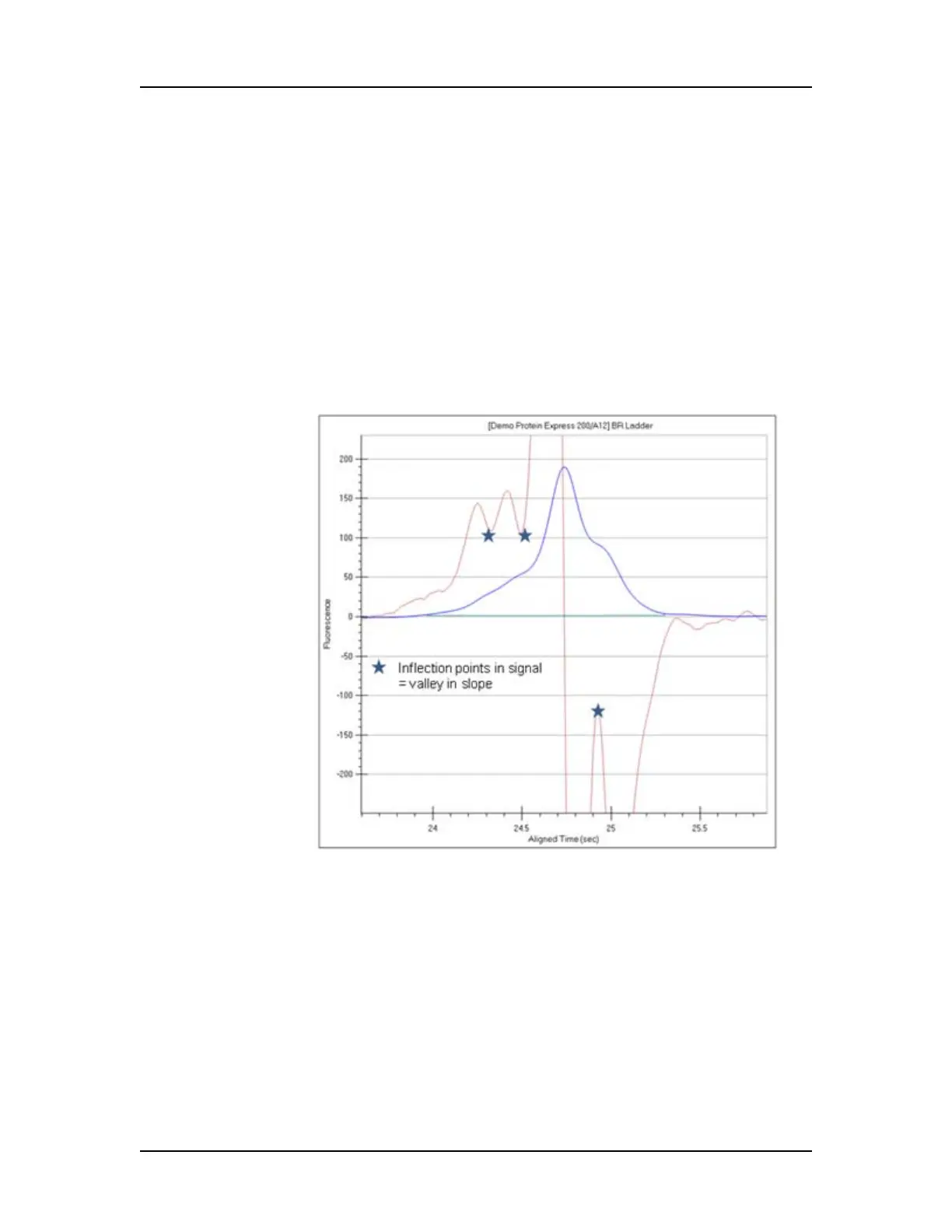